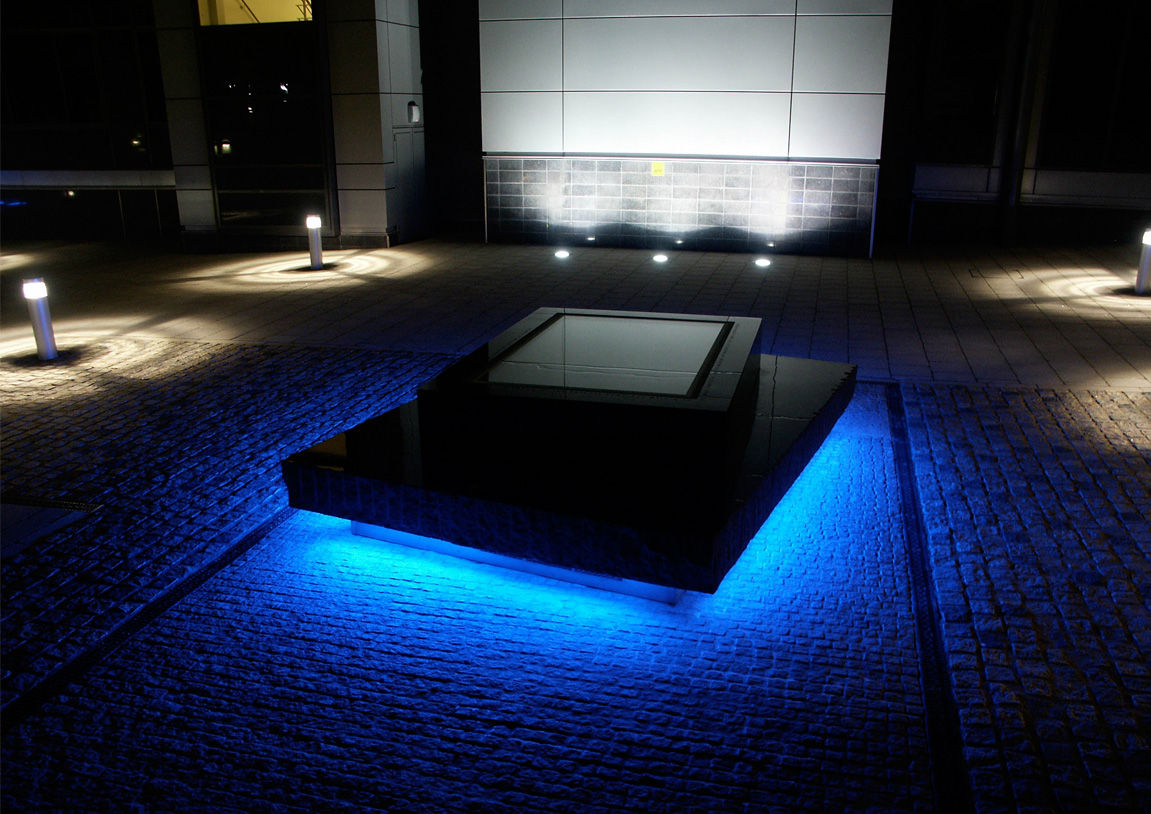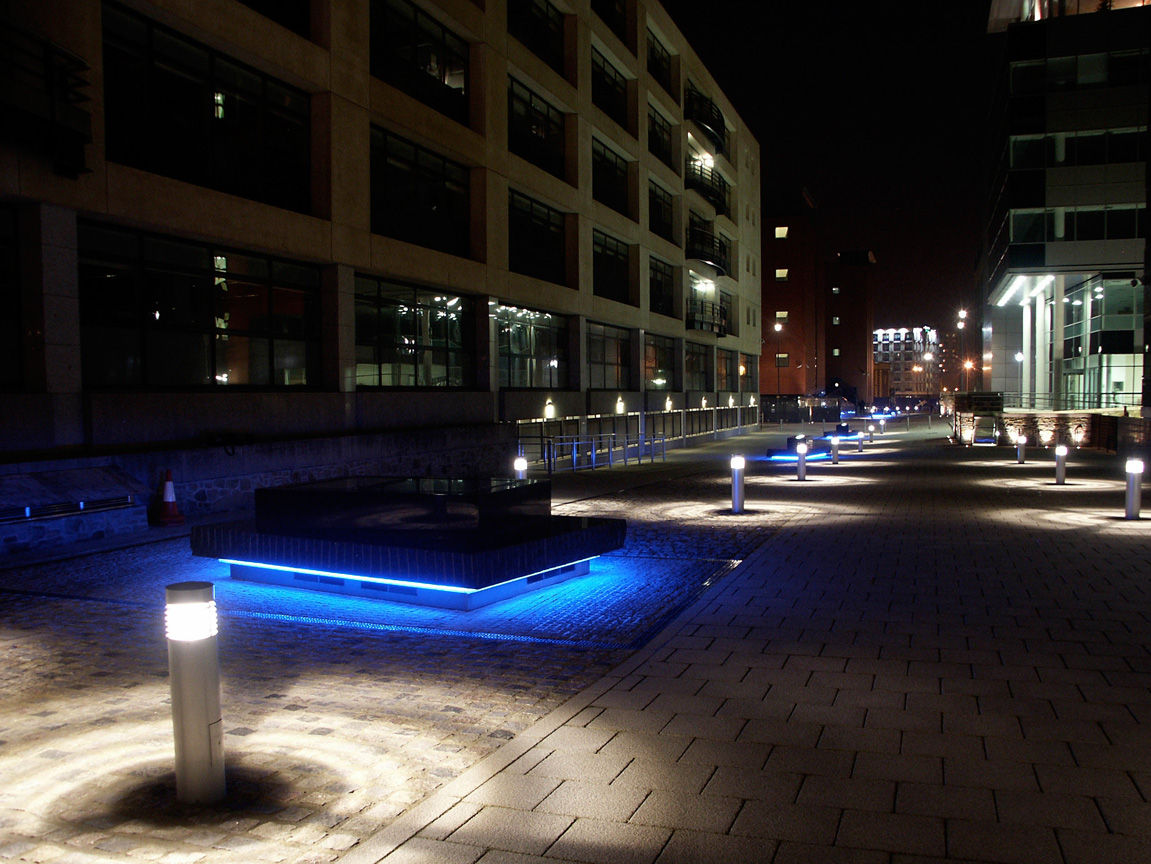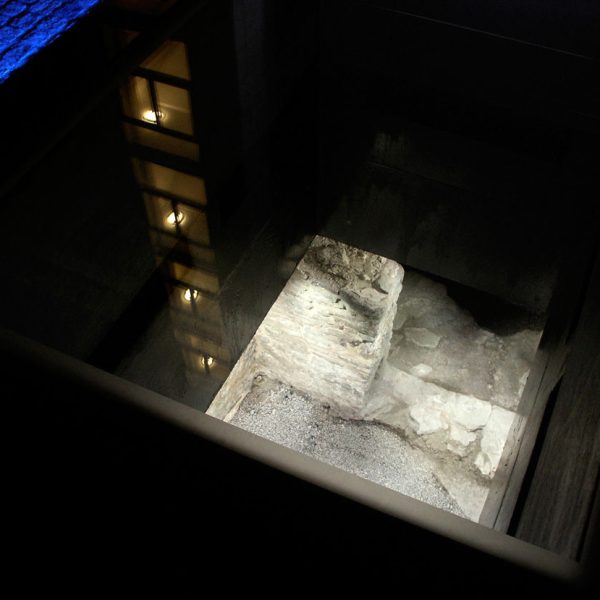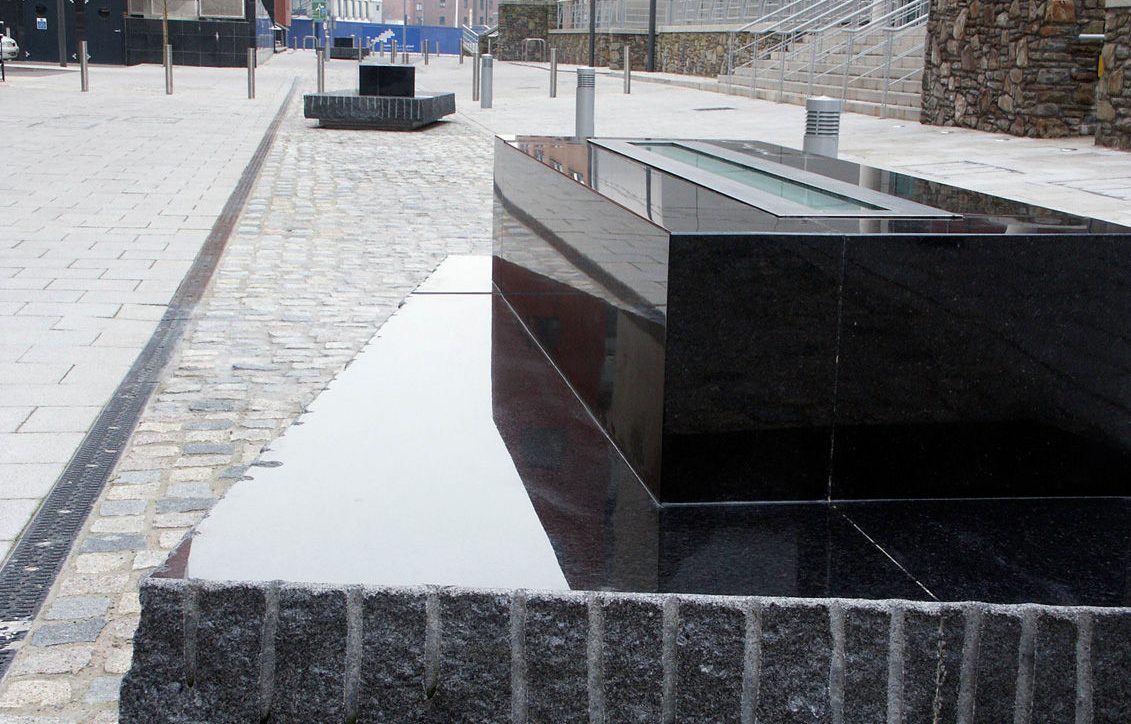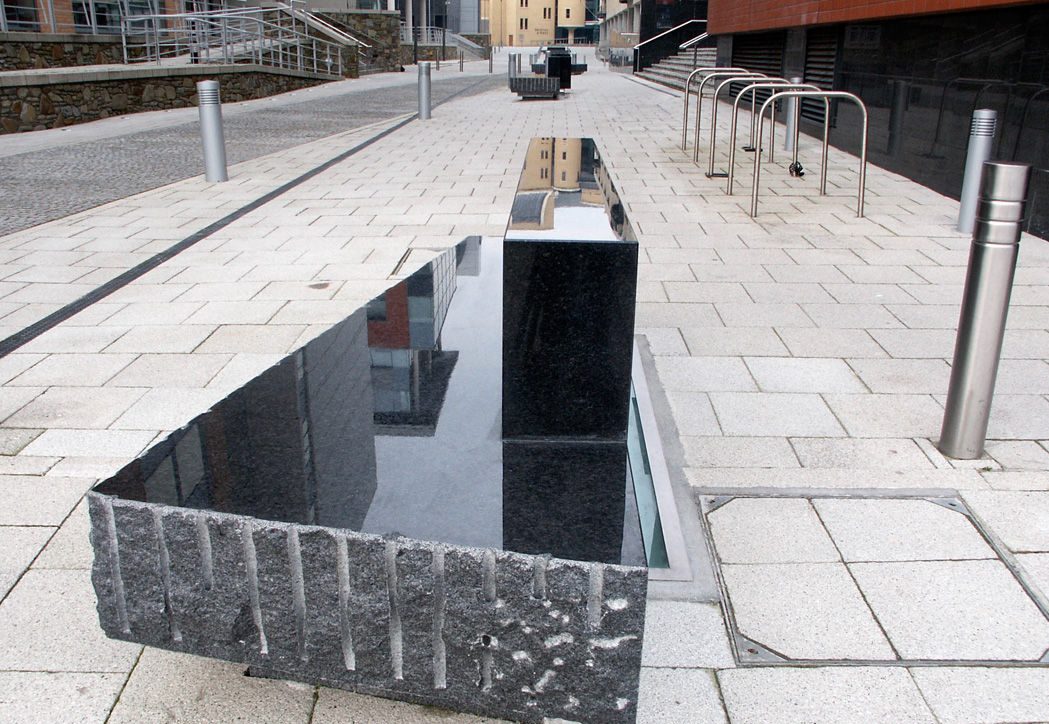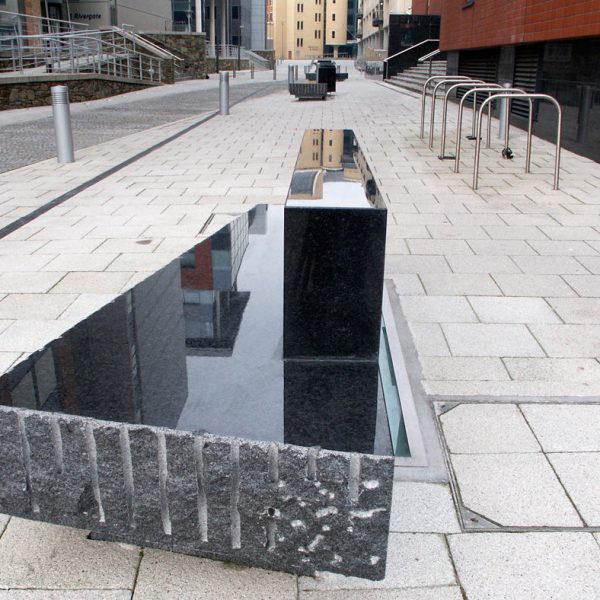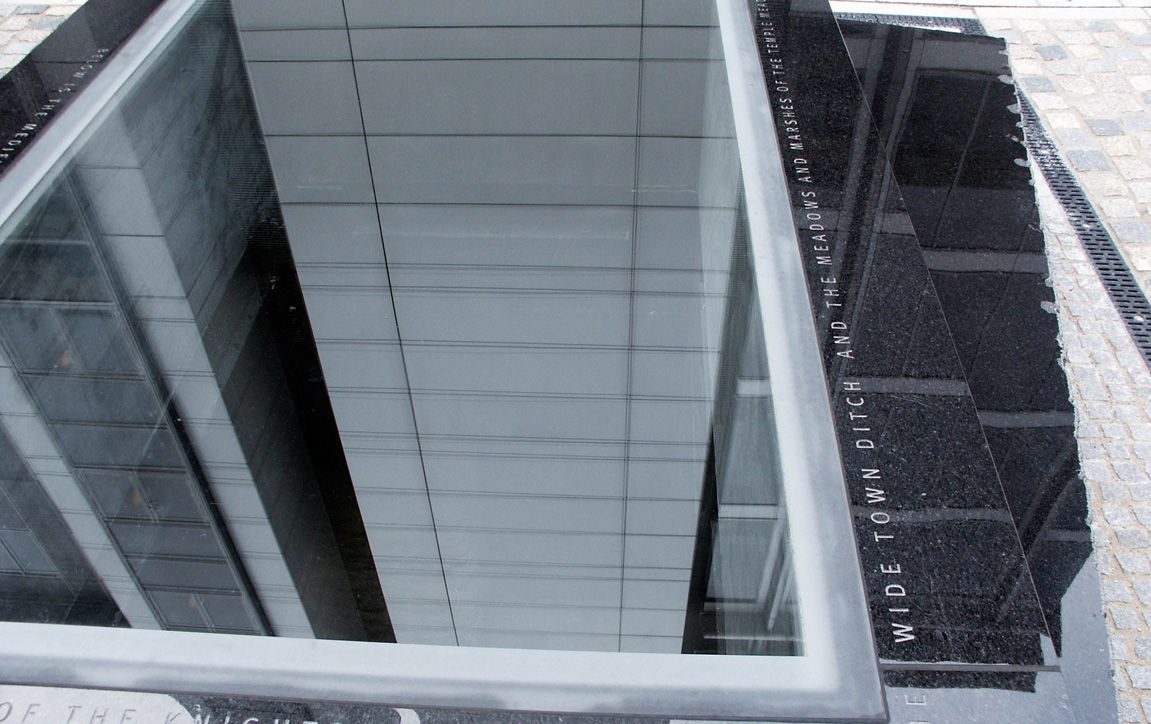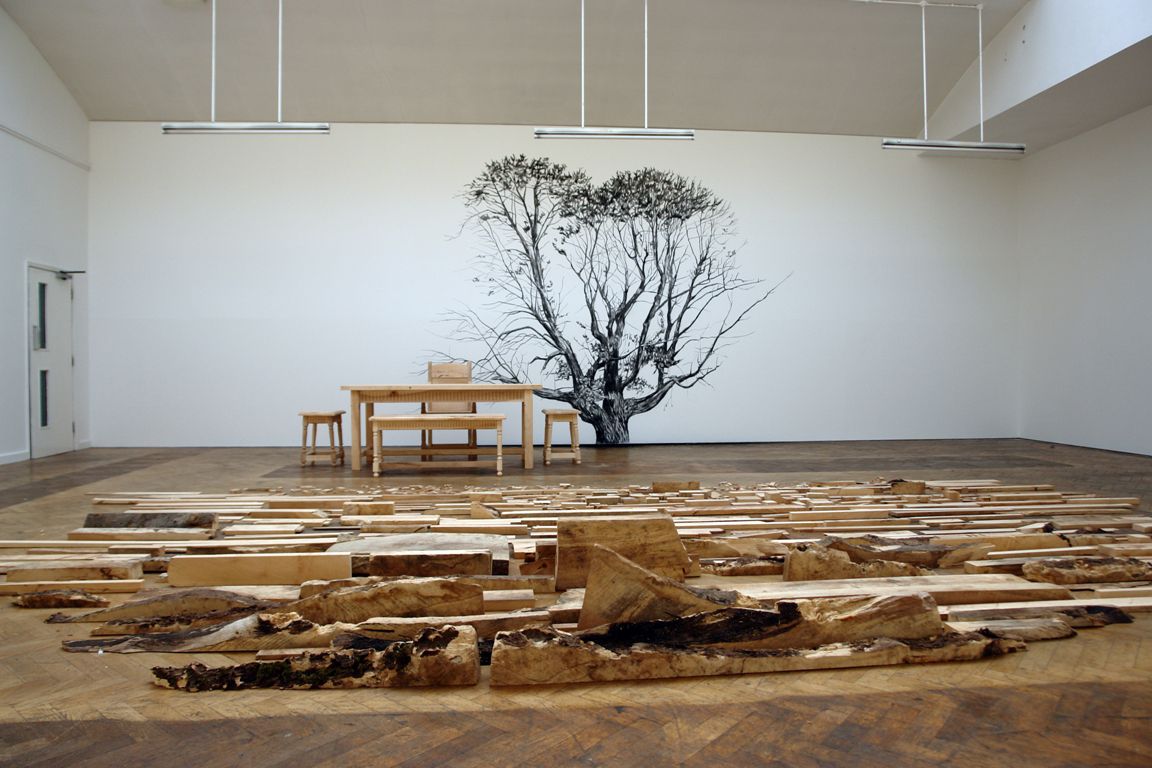
Synopsis
John Aiken’s commission for the Temple Quay area of Bristol is an extensive landscape based work, located within development of offices and HQ Buildings adjacent to Temple Meads Station and the Floating Harbour. The project, which was commissioned as part of SWRDA’s commitment to public art was funded by the Development Agency itself alongside contributions from Castlemore Securities, the developers for the overall site.
Description
Sometimes excellent projects are pre-planned like a military operation and sometimes they come out of a confluence of difficult circumstances that eventually drive the outcome. This was certainly the case here. The issue was the future of a valuable but very vulnerable piece of archaeology on the development site. This was the former River Gate in the city’s historic Portwall, that separated the marshland from the trading centre of the medieval city.
Several metres below the current ground level and in rapidly deteriorating condition, this structure became the focus of heated debate about how best to treat it. One side wanted it open for all to see, while others felt it would rapidly crumble and it would be best for it to be recorded and recovered. The art programme came up with the answer. Geoff Wood who advised SWRDA on public art issues suggested that an artist be commissioned to develop a sculptural solution to both protect and reveal the River Gate. As a result, John Aiken, Director of the Slade School of Art, was appointed to develop a solution and came up with a means of interpreting the route of the historic PortWall as it passes through the site.
At key points along the route modular sculptures appear in polished black granite. Each subsequent sculpture accrues another piece until they become symmetrical benches underlit with blue neon. The last bench sits over a large, underground, illuminated and environmentally controlled room that houses and protects the Rivergate. The sculpture is enlarged and has a glazed viewing aperture through which the archaeology can be viewed. The complete artwork is over a hundred metres long and articulates the path between commercial buildings, whilst providing attractive informal seating for lunchtimes.
John Aiken
John Aiken was born in Belfast in 1950 and studied at the Chelsea School of Art (1968-73) and British School at Rome (1973-75). In 1986 he was appointed Head of Sculpture at the Slade School of Fine Art in London. Aiken’s research has two parallel strands; each informs the development of the other. The first explores new ways of creating autonomous objects using established and new industrial processes linked to the aesthetic capacity of exotic granites. The second involves large-scale public projects, which respond to architectural space and urban environments. Both aspects involve collaborations with a wide range of researchers and disciplines.
Aiken has exhibited widely including: Fourteen Artists/Fourteen Years, Portland Art Museum, Oregon, 2006; The Disembodied Eye, Collective Histories of Northern Irish Art, GT Gallery, Belfast, 2006 and Sonhos e Realidadas, Espaco Gallery, Aljezur, Portugal, 2007 and a solo show at Centro Cultural Cascais, Portugal in 2010. Large-scale commissions for public spaces include Urban Studies Plaza, Portland, Oregon; Newgate Bastion, Derry; Curzon Square, London; University College London Hospital; Paddington Central, London and Wednesfield, Wolverhampton.
An interest in military architecture and archaeology also underpins much of Aiken’s work, with German fortifications in Northern France being for him ‘the most impressive sculpture park in the world.’
